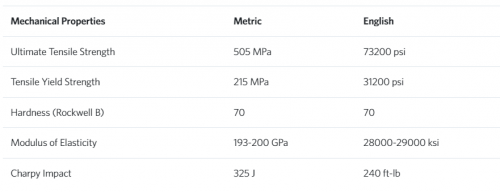Muhammad Ikhsan Rahadian
Contents
[hide]Introduction
Assalamualaikum. Wr. Wb Selamat pagi, siang, sore, malam. Hello, my name is Ikhsan, currently studying Mechanical Engineering at The University of Indonesia. This blog was made for Numerical Method KKI that I took this semester with Pak DAI as the lecturer.
Name: Muhammad Ikhsan Rahadian
Date of Birth: Agustus 2nd, 2002
NPM: 2106656882
Major: Mechanical Engineering
E-mail: ikhsan.sony2@gmail.com
Case Study of Hydrogen Storage Optimization
A pressurized hydrogen tank is a specialized container designed to store hydrogen gas at high pressures. These tanks are essential for the safe storage and transport of hydrogen, which is a highly flammable and low-density gas. Pressurizing hydrogen increases its energy density and allows for more efficient storage and utilization in various applications. Usually, materials that can withstand high pressures are used to build pressurized hydrogen tanks. These materials offer the strength and durability needed to hold the hydrogen gas under high pressure. Pressurized hydrogen tanks are used in various industries and applications such as fuel cell vehicles, energy storage, and industrial process. In this class, our goal is to improve and optimize the pressurized hydrogen tank's design to withstand an 8-bar pressure and hold 1 liter of hydrogen.
Pressurized Hydrogen
Pressurized hydrogen refers to hydrogen gas that is stored or transported at high pressures. Hydrogen is naturally a gas at standard temperature and pressure (STP), which is defined as 0 degrees Celsius (32 degrees Fahrenheit) and 1 atmosphere of pressure. However, when hydrogen is subjected to higher pressures, it becomes compressed and occupies a smaller volume.
Pressurized hydrogen is typically stored in specially designed containers, such as high-pressure cylinders or tanks, that can withstand the increased internal pressure. These containers are constructed using materials that can handle high pressures. The hydrogen gas is compressed into these containers, allowing for a greater quantity of hydrogen to be stored in a smaller space.
The Material of Hydrogen Tank
Stainless steel 304, also known as UNS S30400, is a commonly used austenitic stainless steel alloy. It is part of the 300 series stainless steels, which are known for their excellent corrosion resistance, durability, and versatility. I choose this material because of several factors, such as Corrosion Resistance; strength and durability: it has good mechanical properties, including high tensile strength and yield strength; Formability and Weldability; and Temperature Resistance.
Hydrogen tank Constrain
My concern for optimizing the design of the tank is the design, material, and cost of the tank. I choose a cylindrical shape because it can spread the pressure evenly and can hold plenty. Also, I want the tank to be space-saving, so it is cheap to produce but still hold 8 bar pressure.
The coding of the geometry of the tank
import math
def minimize_surface_area(volume):
# Initialize variables for minimum surface area and corresponding dimensions
min_surface_area = float('inf')
best_dimensions = ()
# Iterate through possible dimensions to find the minimum surface area
for radius in range(1, int(math.sqrt(volume / math.pi)) + 1):
height = volume / (math.pi * radius**2)
surface_area = 2 * math.pi * radius * (radius + height)
# Update minimum surface area and corresponding dimensions if a smaller area is found
if surface_area < min_surface_area:
min_surface_area = surface_area
best_dimensions = (radius, height)
return min_surface_area, best_dimensions
# Given a minimum volume of 1 liter (1000 cm^3)
minimum_volume = 1000
# Calculate the minimum surface area and corresponding dimensions
min_surface_area, dimensions = minimize_surface_area(minimum_volume)
radius, height = dimensions
# Print the results
print("Minimum Surface Area:", min_surface_area, "cm^2")
print("Optimal dimensions for minimum surface area:")
print("Radius:", radius, "cm")
print("Height:", height, "cm")Result
Minimum Surface Area: 557.0796326794897 cm^2
Optimal dimensions for minimum surface area:
Radius: 5 cm
Height: 12.732395447351626 cmThe hoop stress
def calculate_hoop_stress(radius, height, pressure):
# Calculate the hoop stress on the cylinder
hoop_stress = 2 * pressure * radius / (radius + height)
return hoop_stress
# Given the radius and height of the cylindrical shape
radius = 5 # cm
height = 12.732395447351626 # cm
# Given the pressure
pressure = 8 # bar
# Convert pressure to pascal (Pa)
pressure_pa = pressure * 1e5
# Calculate the hoop stress
hoop_stress = calculate_hoop_stress(radius, height, pressure_pa)
# Print the hoop stress
print("Hoop Stress:", hoop_stress, "Pa")Result
Hoop Stress: 451151.68019754585 Pa
The Thickness of the Stainless steel 304 plate
def calculate_thickness(radius, pressure, yield_strength, safety_factor):
# Calculate the required thickness based on the pressure, radius, yield strength, and safety factor
thickness = (pressure * radius) / (2 * yield_strength * safety_factor)
return thickness
# Given the radius of the cylindrical structure
radius = 5 # cm
# Given the internal pressure in bars
pressure = 8 # bar
# Given the yield strength of stainless steel 304 in pascal (Pa)
yield_strength = 275e6 # Pa
# Given the safety factor for the design
safety_factor = 1.5
# Convert pressure to pascal (Pa)
pressure_pa = pressure * 1e5
# Calculate the thickness
thickness = calculate_thickness(radius, pressure_pa, yield_strength, safety_factor)
# Print the thickness
print("Thickness:", thickness, "m")Result
Thickness: 0.0048484848484848485 mHydrogen tank Cost
After the thickness value is obtained, around 4,8 mm and the surface area is 557 cm^2, we can calculate the cost of this tank. On the marketplace, the price of stainless steel 304 with a thickness of 5 mm and area of 10 x 10 cm is Rp.133.000. From that, the cost of this tank is Rp.185.202. It is just the material cost, but if we calculate the other costs such as welding, designing, and labor cost, the price will be higher.
Conclusion
A pressurized hydrogen tank is a specialized container designed to store hydrogen gas at high pressures. The material used is stainless steel 304, due to its high tensile strength and yield strength, good mechanical properties, and availability. After the calculation is done, the surface area of the tank is 557,0796326794897 cm^2 with a radius of 5 cm and height of 12,732395447351626 cm, and thickness is 4,8 mm. The cost of this tank is Rp.185.202

